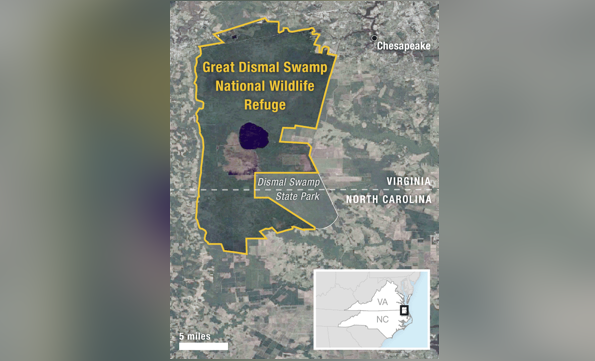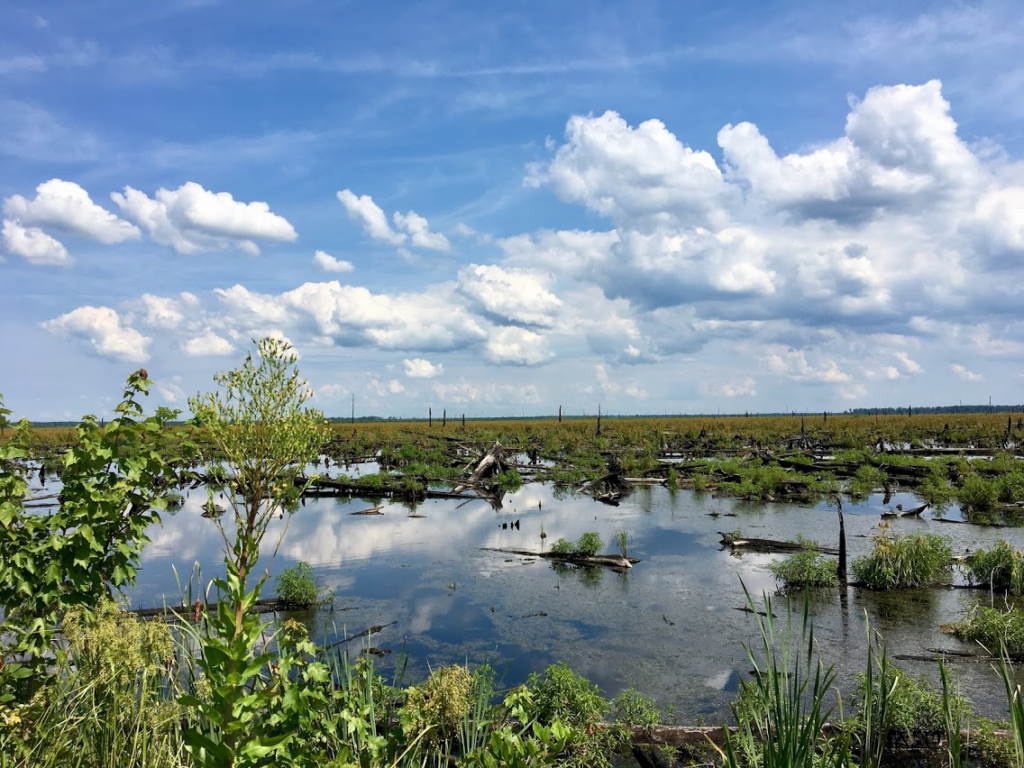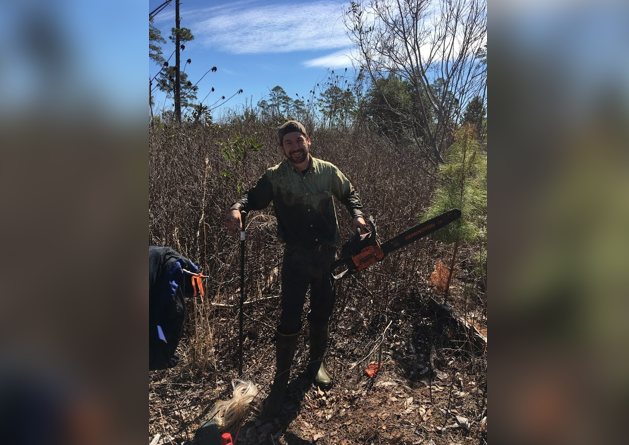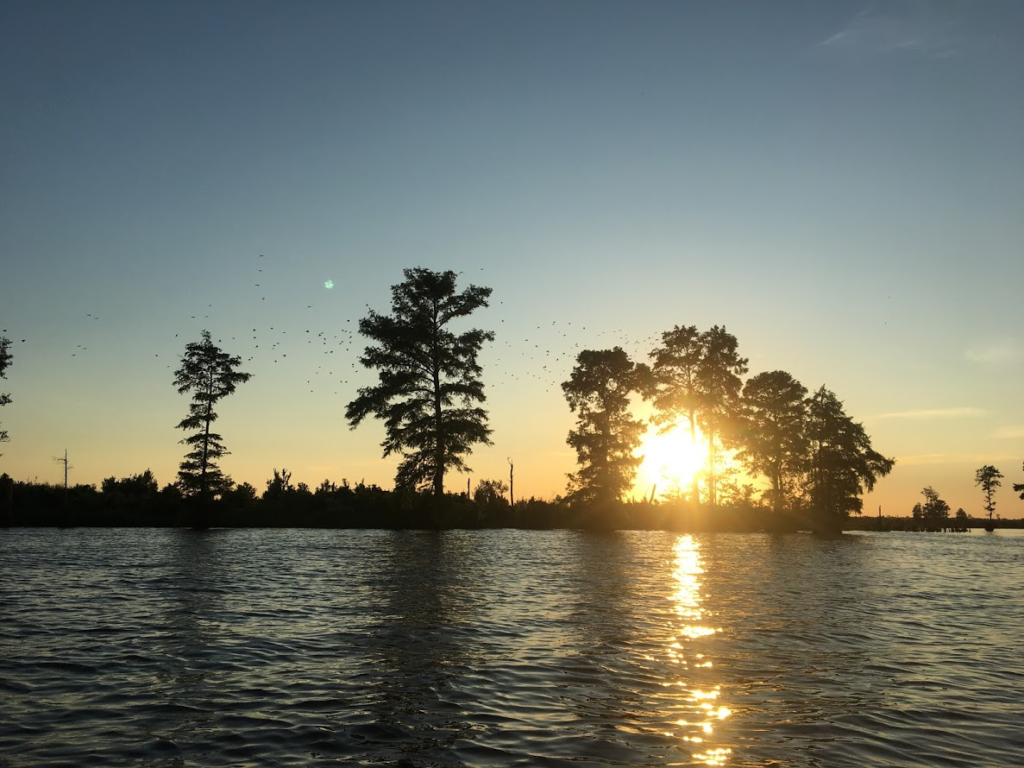Virginia’s largest peatland is being restored with the continuous efforts of researchers and stakeholders.
By Cassidy Quistorff
“It certainly could be… dismal.” Clay Word, a recent Masters graduate of Virginia Tech, conducted his field work in a unique landscape. “It would usually take me two weeks to get all of the dirt and peat out of my wrinkles and hair. You can leave the swamp, but the swamp doesn’t leave you.”
The Great Dismal Swamp National Wildlife Refuge and State Park is a forested peatland. This type of landscape is a wetland that has abundant vegetation and soil that is primarily made up of dead and decaying plants and leaf litter. Peatlands only make up about 3% of our planet’s land surface, but store 30% of global land carbon. While roughly 95% of the world’s peatlands are located far north in boreal forests or in tropical environments, The Great Dismal Swamp is unique in that it borders Virginia and North Carolina, covering about 175 square miles.

The swamp’s area used to be much greater in size, once engulfing 2,000 square miles – roughly the size of Delaware.
Dramatic alterations to the Great Dismal Swamp started in the 1760s when a man named George Washington (yes, that George Washington) brought his landscaping company to the swamp, with the hope of converting it to farmland. Although the area ended up not being conducive to farming, loggers were attracted to the trees. This led to building dams and ditches, which altered the swamp’s hydrology.
Because of the altered water flow, some areas are now more at-risk for flooding. But in other areas, draining caused the natural peat soil to dry out, making it much more flammable and vulnerable to wildfires. In 2011, the swamp burned for 111 days and affected more than 6,000 acres of the land.

Fire, in addition to past logging activities, has changed the vegetation in the Great Dismal Swamp. Using 79 random plots, researchers at Virginia Tech went to remote locations within the swamp to inventory vegetation communities. Their results showed many of the historical trees, such as bald cypress and Atlantic white cedar, have now been replaced by a red maple-dominated forest.
“We’re seeing that red maple is dominant, particularly compared to the mosaic of forestland types that historically characterized the swamp,” Dr. Daniel McLaughlin, Associate Professor at Virginia Tech, explained. “Further, peatlands are known for their ability to store carbon, but increased fire vulnerability at the swamp and other drained peatlands can result in large carbon losses and emissions.”
The studies in the swamp have shown that wetter sites decrease maple dominance and increase species diversity.
Higher water levels in the peat show a decrease in maple, and are also less flammable than the areas where the peat is dried out.
To aid in restoring the forest’s diversity, re-wetting efforts are taking place throughout the Great Dismal Swamp Refuge in hopes of bringing back some of its important characteristics. The re-wetting process is exactly what it sounds like: drainage control structures are put in place in order to slow and retain water that was previously directed out of the swamp.
Research helps guide and inform the swamp’s restoration efforts. “This is only possible with stakeholder partnerships,” Dr. McLaughlin informed. “These conversations help us understand what they know about the swamp already, and how we can help answer what they need to know [for management strategies].”
Instead of the natural carbon sequestration, disturbed peatlands are a major source of greenhouse gas emissions. They are accountable for annually releasing almost 6% of global human-caused carbon emissions. Peatland restoration efforts offer an opportunity to significantly reduce that number.
Clay Word, one of Dr. McLaughlin’s graduate students, has fond memories of his “type 2 fun” days in the swamp. “My first time out there, it took about four hours to bushwhack eight-tenths of a mile…” Clay’s dirty job helped inform land managers of an important question: how are the previously drained peatland soils responding to the hydrologic management today?

“For any disturbance, our actions have a consequence for ecosystem function. There’s really no ecosystem left, or very few, that is undisturbed. Because the dismal swamp is disturbed, we have to manage it going forward and try to get it to a better functioning state.”
The swamp is home to over 220 bird species, black bears, bobcats, river otters alligators, and one of only two natural lakes in Virginia. In addition to the biodiverse habitat they provide, peatlands are among the most valuable ecosystems on Earth—storing more carbon than all other vegetation types in the world combined.
For Virginia’s small slice of peatland, things look hopeful for the future of its management. With researchers and stakeholders working together, the knowledge and restorative measures for this unique landscape will continue to grow, leaving the most dismal thing about this place its past.

Special thanks to Dr. Daniel McLaughlin and Clay Word for their time, and Morgan Schulte and Ray Ludwig for their efforts in Great Dismal Swamp Research
If you would like to learn more about the Great Dismal Swamp, here is an episode from Virginia Water Radio: Exploring the Great Dismal Swamp (7-1-19)
